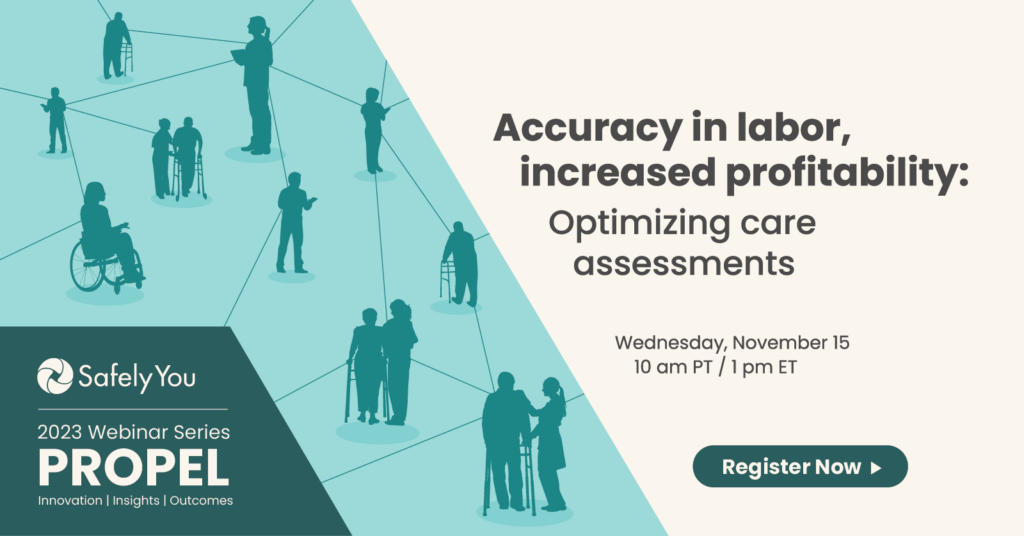A purposeful rounding program is a great way to check in on residents, assess their needs and create that personalized touch in senior housing and memory care communities. We discussed how a rounding program can positively impact residents, direct-care workers and operators in a recent whitepaper and now we want to get tactical and highlight how to conduct efficient and effective rounds.
The key to a successful program is consistency. Direct-care staff should collaborate with leadership and decide how often to conduct resident rounds during a shift. While the timing may vary from community to community, the care team’s approach and interaction with residents should be the same.
The fall prevention experts at SafelyYou developed a Resident Health and Wellness Log and Environmental Sweep Checklist to serve as a road map to guide direct-care staff’s interaction with residents during their scheduled rounding time. This removes the guess work, ensures all interactions are consistent and provides an easy way to document the rounding assessment.
The Resident Health and Wellness Log is simplistic and useful because all care staff can complete the date, time of visit and log that safety and comfort were attended to and continence care was provided. There also is a section for comments, which will be a good summary to refer to when there is a shift change.
Since resident rounding is an essential element of the fall prevention process, care staff also can review the Environmental Sweep Checklist to ensure all items have been addressed to reduce fall risk before leaving a resident unattended.
The Checklist is very detailed and covers important resident engagement details, such as talking to residents at eye level to make sure toileting, activities, food and beverage requests and pain management needs have been met.
There also is a section devoted to the specific elements of continence care and positioning, including incontinence items are provided and fit properly, the resident is in their preferred and safe location and the pathway is uncluttered and clear in case the resident tries to move around the room on their own.
This type of personalized care also includes a checklist for resident-specific items, such as determining a resident’s glasses and TV remote are within an easy reach. It may seem like a simple act to reach for a glass of water or remote, but if these items aren’t easily accessible, a resident can easily fall and be injured. For this same reason, mobility aids should be positioned properly.
The Log and Checklist support the SAFER approach we highlighted in a recent blog but it’s worth recapping this approach to individualized care again to demonstrate that they work hand in hand:
Scan for safety hazards: Declutter the environment so there are clear pathways; ensure a resident is wearing proper clothing and appropriate footwear, confirm a fall mat is in place if needed
Address unmet needs: Do restroom check, offer to get a resident something to drink, and provide an activity of interest to keep a resident occupied and entertained
Foresee resident action: Place often used items, such glasses and remote, within reach; ensure mobility aid is in the proper position.
Evaluate the round: Review the round and confirm that all issues were reviewed, and all fall prevention measures were put in place before leaving a resident alone.
Repeat: Schedule rounds consistently and repeat this process throughout a shift to ensure residents are comfortable and safe.
This personalized approach not only maximizes the direct-care staff’s time, but it makes for an efficient way for an entire care team to monitor a patient continuously.
Learn More
SafelyYou can help you implement an effective fall prevention program. To learn more, visit the Fall Huddle Resource Hub or contact SafelyYou at [email protected].






